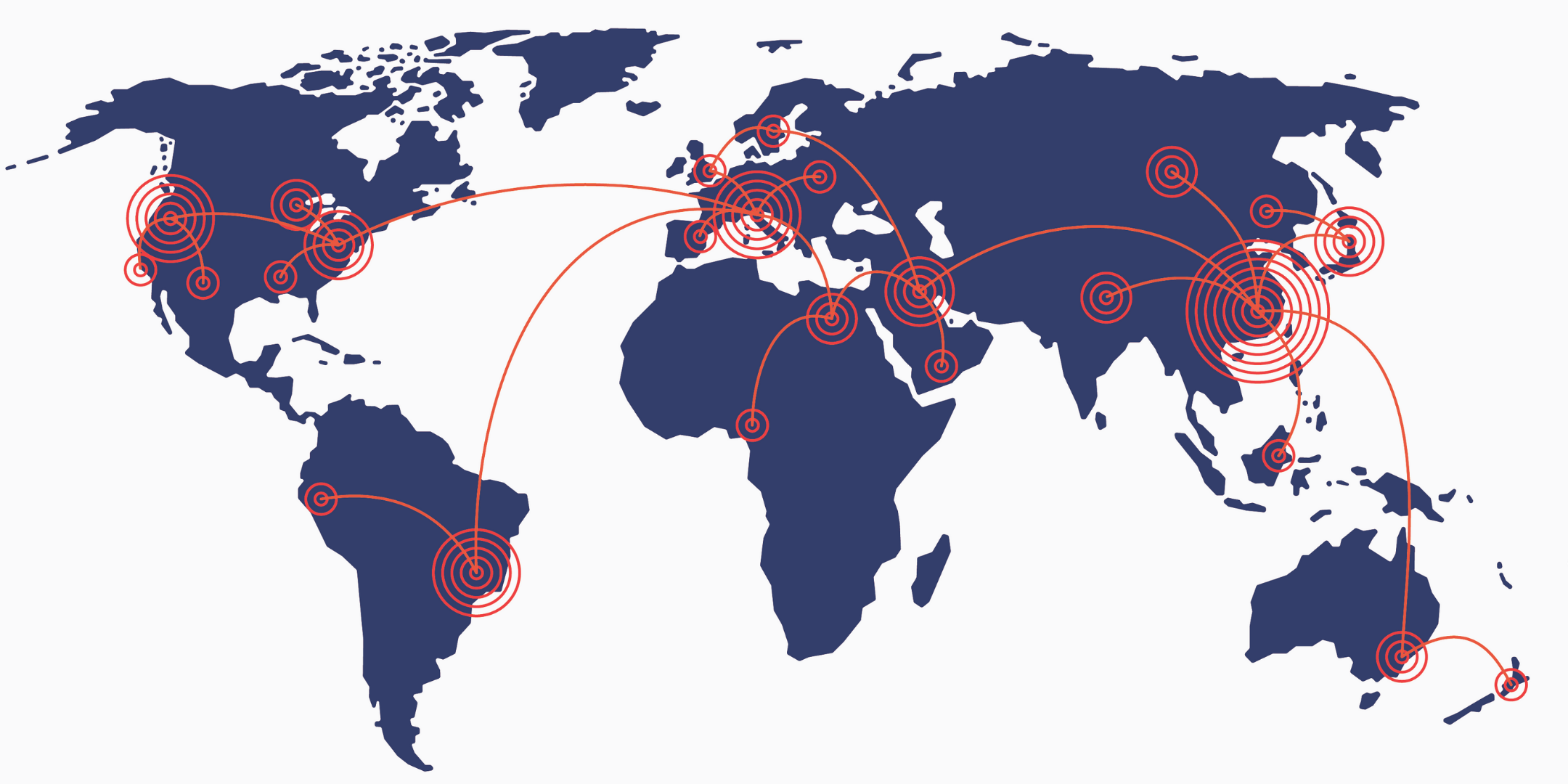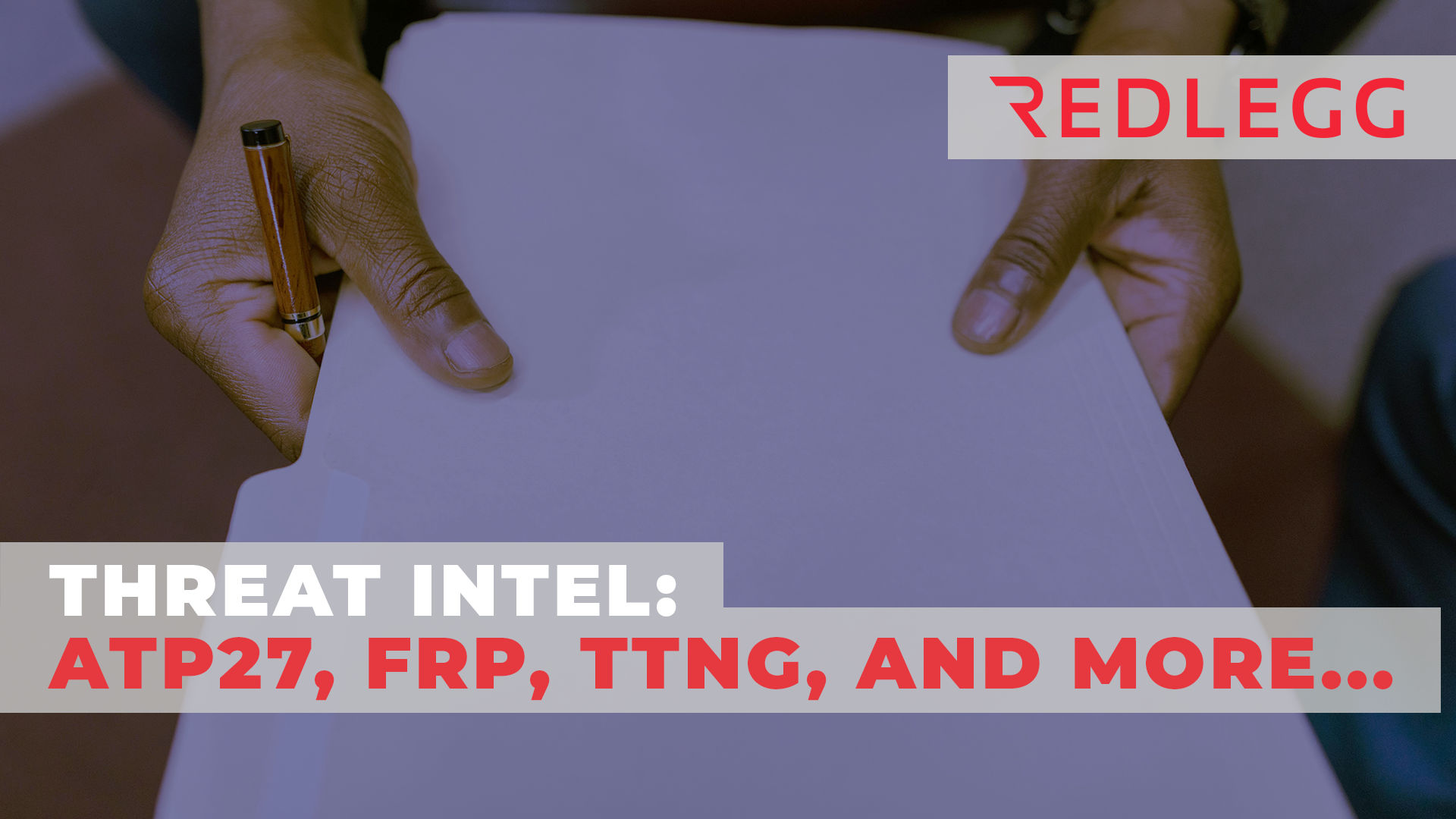38 min read
By: RedLegg Blog
Every organization is vulnerable to cyber threats.
Most devices today are connected to the internet—be it cars, consumer durables like air conditioners or heating systems, or laptops and mobile phones. IoT devices are increasingly transmitting large amounts of data across cyberspace. And with most apps migrating to the cloud, more and more personal and work-related information is moving online.
Experts believe that the economic damages caused by cyber attacks will likely cross $15.63 trillion by 2029.
What can you do to protect your data, systems and networks from cyber threats and vulnerabilities? The first step is understanding how to identify threat actors. Who are they? What do they want to achieve? Most importantly, why do they want to attack our systems?
“If you know the enemy and know yourself, you need not fear the result of a hundred battles.”
- Sun Tzu, The Art of War
Read on to discover the different types of cyber threat actors and their motivations. We'll also look at how RedLegg protects your data and systems by fixing vulnerabilities and implementing internal security policies.
Exploring the Landscape of Cyber Threat Actors
In the world of cybersecurity, a threat may be defined as a potential negative action or event facilitated by a vulnerability that results in an unwanted impact on a computer system or application.
Simply put, this means that there are technical weaknesses in our devices, systems or networks. A person or an organization with malicious intent can break into systems or networks through a weak spot and inflict damage. The individual or group carrying out such cyber threats is called a cyber threat actor.
The damage inflicted by threat actors may take various forms:
- They may render apps or systems unusable, leading to network outages and system downtime that cause economic losses to corporations and businesses.
- They may corrupt data and make it unreadable.
- They may steal sensitive personal or financial information and use it to embezzle funds.
- They may commit other types of fraud, like theft of intellectual property.
- Disruptions caused by cyber attacks lead to negative publicity and a loss of reputation for the company attacked as it exposes core vulnerabilities in their security.
The total amount of digital data worldwide will reach 394 zettabytes by 2028, with about 200 zettabytes stored in public or private cloud environments as of 2025. An important implication is that the cyber threat surface is growing exponentially.
Knowledge is power.
Understanding the concept of what is a threat actor in cybersecurity and recognizing the types of actors in our cyber threat landscape has become more critical than ever. It will help you map out a cyberdefense strategy to outmaneuver these attackers successfully. At the very least, it can minimize the damage they can inflict and potentially save companies millions of dollars of hard-earned revenue.
Types of Cyber Threat Actors
Let's first look at the types of threat actors lurking out there—each using distinct tactics, techniques, and procedures to breach security layers.
Organized Cybercriminals: Profiting from Cybercrime
Chief Goal: Financial Gain
Typical Targets: Cash and/or Data-Rich Organizations and Businesses.
Organized criminal groups are taking to cybercrime. After all, considering that the economic impact runs into millions of dollars, it appears profitable.
These threat actors focus on stealing sensitive financial data from corporations, money from financial systems, or personal information from customer records. They are also known to use ransomware to extort business owners directly.
They operate using well-structured methods and sophisticated tools to target vulnerable systems and carry out 'cyber' heists.
However, since they're after financial gain, the data they steal isn't solely their own! It soon starts to show up on the black market or is sold to the highest bidder.
Mitigation Tactics: To defend against this type of threat actor, businesses should prioritize layered security strategies:
- Implement strong access controls: Limit user permissions based on roles and apply multi-factor authentication (MFA) to reduce credential theft risk.
- Encrypt sensitive data: Protect financial records and personal data at rest and in transit to prevent misuse even if accessed.
- Regularly back up systems: Maintain frequent, secure backups offline or in immutable storage to recover quickly from ransomware attacks.
- Monitor for suspicious behavior: Use threat detection tools to flag abnormal activity, such as unusual data access or outbound connections.
- Train staff to spot social engineering: Since many attacks start with phishing, make employee awareness a frontline defense.
- Patch known vulnerabilities: Apply updates and security fixes promptly to reduce attack surfaces exploited by organized cybercriminals.
These steps reduce exposure and make high-value targets harder to breach, even for sophisticated threat actor types seeking quick financial gain.
Hacktivists: Cyber Activism with a Dark Side
Chief Goal: Exposing secrets and disrupting organizations that are perceived as evil.
Typical Targets: Not limited to any specific type of organization or business.
Here's a type of cyber threat actor that does a bit of good—even though it's in a destructive way!
These threat actors have strong political affiliations or social ideologies coupled with expert hacking skills. They demonstrate vulnerabilities in systems and networks aimed at raising cybersecurity awareness (or sometimes advancing socio-political agendas.)
While they can cause significant disruptions, they are not usually motivated by financial gains.
Mitigation Tactics: Because hacktivists are driven by ideology rather than profit, their attacks are often public, disruptive, and aimed at damaging reputation:
- Monitor digital presence: Stay alert to chatter on forums, social platforms, and dark web channels where hacktivist activity may be planned.
- Strengthen perimeter defenses: Harden firewalls, secure APIs, and implement web application firewalls (WAFs) to block common exploit attempts.
- Prepare a crisis communications plan: A swift, coordinated public response can minimize reputational damage in the event of a breach.
- Audit for weak points in public-facing systems: These types of threat actors often target websites, customer portals, or email servers—make them harder to exploit.
- Avoid unnecessary exposure: Review content and messaging to reduce the chance of becoming a perceived adversary or target.
- Conduct tabletop exercises: Test incident response plans for politically or socially motivated attacks to strengthen organizational readiness.
Understanding the motivations behind different threat actor types helps tailor defenses to minimize impact from cause-driven disruption.
Insider Threats: The Danger Within
Chief Goal: Work from within an organization to get around its cybersecurity framework.
Typical Targets: Not limited to any specific type of organization.
We don't have to look far to find these types of cyber threat actors. The danger lurks within! Insider threats are more common than you may imagine.
Sometimes a company's employees, contractors, or partners may misuse their authorized access privileges to steal data. Their motive may be financial gain, or they may do it for other reasons, such as using customer data for their initiatives or leaking out proprietary information to a competitor they wish to join.
In any case, these threat actors pose a significant challenge for organizations to detect and prevent as they have authorized access from within.
Mitigation Tactics: Since insider threats operate from within the organization, detection and prevention require a mix of technology and trust management:
- Implement user behavior analytics (UBA): Track deviations from normal activity patterns to flag potential misuse of access.
- Apply the principle of least privilege (PoLP): Limit access to only what each role requires—nothing more.
- Adopt Identity and Access Management (IAM): Centralize control over user identities and system access to reduce unauthorized activity.
- Leverage Privileged Access Management (PAM): Control and monitor the use of elevated permissions to reduce the risk of abuse by insiders.
- Implement Identity Governance and Administration (IGA): Automate the provisioning and deprovisioning of access based on roles, and enforce policies tied to identity lifecycle management.
- Rotate credentials and disable dormant accounts: Prevent former employees or unused accounts from becoming entry points.
- Conduct regular audits and access reviews: Routinely verify that current access levels align with job responsibilities.
- Foster a culture of accountability: Encourage reporting of suspicious behavior and provide clear policies on data handling.
- Use data loss prevention (DLP) tools: Monitor for unauthorized data transfers, downloads, or external email activity.
Among the most difficult types of threat actors to anticipate, insiders demand a strategic focus on identity, oversight, and strong internal controls to reduce risk.
Cyber Extortionists: Holding Data Hostage
Chief Goal: Cause harm and destruction to further their cause.
Typical Targets: Businesses, state machinery and critical services.
Extortionists hold hostages and demand ransom payments for their release. Cyber extortionists capture data and hold it hostage!
They use ransomware attacks to encrypt valuable data, paralyze critical systems, and cause major operational disruptions with significant financial consequences.
Mitigation Tactics: To defend against cyber extortionists, organizations need to prioritize resilience and rapid response:
- Maintain offline, immutable backups: Regularly back up critical systems and store copies offline to support full recovery without paying ransom.
- Segment your network: Limit the spread of ransomware by isolating systems and restricting internal movement.
- Deploy endpoint detection and response (EDR) tools: Spot and contain ransomware activity before it causes widespread damage.
- Deploy a robust Managed Detection and Response (MDR) solution: Gain around-the-clock monitoring, threat hunting, and rapid response capabilities to detect and neutralize threats early.
- Run frequent phishing simulations: Many extortion attempts begin with malicious email links—train teams to spot and avoid them.
- Keep systems patched and updated: Ransomware often exploits known vulnerabilities—close those doors quickly.
- Develop a ransomware response playbook: Define clear steps for containment, communication, and recovery in case these types of threat actors strike.
Among all threat actor types, cyber extortionists cause some of the most immediate and visible damage—preparedness is critical.
Script Kiddies: Amateur Threat Actors
Chief Goal: Attack, vandalize, and inflict as much damage as possible.
Typical Targets: Easy-to-penetrate systems and networks, which are vulnerable to widely-known threats.
These types of cyber threat actors are like new kids on the block. They don't have sophisticated techniques and often lack serious hacking skills. They usually rely on pre-written scripts and tools developed by other types of threat actors to penetrate a network or system.
Even though they have a less sophisticated approach, their actions can still cause significant damage and financial losses.
Mitigation Tactics: While script kiddies may lack advanced skills, they often succeed by exploiting basic security gaps:
- Disable unused ports and services: Minimize your attack surface by closing common entry points often targeted by automated tools.
- Use security configurations and hardening guides: Apply best practices for system setup to block default vulnerabilities.
- Implement basic intrusion detection systems (IDS): Detect and alert on known attack signatures these threat actor types tend to reuse.
- Keep antivirus and firewalls active and updated: Foundational defenses still matter—especially against low-effort attacks.
- Enforce secure password policies: Weak or reused credentials are easy wins for script-based attacks.
- Stay current with patching: Even amateur actors can exploit unpatched software using freely available exploits.
Among all types of threat actors, script kiddies are the easiest to block—but only if the basics are in place.
State-Sponsored Threat Actors: A Nation-State's Arsenal
Chief Goal: Espionage, theft, or other disruptive activity that furthers the interests of a particular nation/group of nations.
Typical Targets: Businesses and government-run organizations.
Nations are increasingly using cyber espionage to wage an information war. It is a growing global cybersecurity concern.
Backed by influential leaders, state-sponsored hackers can sabotage and disrupt networks and critical computer systems.
Because they are sponsored by governments, they have access to significant resources and can build up formidable capabilities, making them one of the most dangerous types of threat actors.
Mitigation Tactics: Defending against state-sponsored threat actors requires heightened vigilance and advanced security measures:
- Adopt a zero-trust architecture: Assume no implicit trust—validate every user, device, and connection inside and outside your network.
- Implement threat intelligence feeds: Stay ahead of known nation-state tactics by integrating up-to-date indicators of compromise (IOCs).
- Conduct regular red team exercises: Simulate advanced persistent threats to test and strengthen your detection and response capabilities.
- Encrypt sensitive communications and data: Limit the usefulness of any stolen information through strong encryption protocols.
- Apply strict vulnerability management: These types of threat actors often exploit zero-day or unpatched vulnerabilities—close gaps quickly.
- Strengthen supply chain security: Vet third-party vendors and monitor their security posture, as indirect entry points are common in state-sponsored campaigns.
Among all threat actor types, state-sponsored groups are the most persistent and well-resourced—defense requires strategic investment and constant adaptation.
Internal User Errors
Chief Goal: Not malicious, often inadvertent.
Typical Targets: Can affect any organization, however secure.
Not all threat actors are malicious. Sometimes, authorized system users such as employees, contractors or outsourced workers may unintentionally compromise a network or delete important information because of a lack of awareness or skills.
They may not have a negative motive, but the damage they cause can be extensive. Even simple user errors can end in catastrophe—simply due to the elevated permissions they have to the organization's systems and networks.
Mitigation Tactics: Even though internal user errors are unintentional, they can be just as damaging as attacks from malicious threat actor types:
- Deliver ongoing user training: Regular, role-based education helps users recognize risks and handle systems responsibly.
- Implement role-based access control (RBAC): Limit permissions so users can only access the tools and data they need.
- Enable version control and audit trails: Track changes and recover from accidental deletions or edits quickly.
- Use confirmation prompts and fail-safes: Add verification steps before users make high-impact changes.
- Apply endpoint protection with rollback capabilities: Allow quick restoration in case of accidental file corruption or deletion.
- Automate routine tasks where possible: Reducing manual input lowers the chance of user error in high-risk processes.
While these incidents don't stem from hostile types of threat actors, the fallout can be severe—prevention depends on systems, safeguards, and smart training.
Common Motivations Driving Threat Actors
Each type of threat actor has a different motivation. But the end result is always damaging for the victim of the cyber attack.
When an attack is motivated by financial gain or for spreading hateful or misleading messages, the potential for damage is much greater.
Cyber attacks carried for personal vendetta or to disrupt an evil cause may seem benign but are a risk that companies must work to mitigate.
While unintentional or activism-inspired attacks are less harmful, your cybersecurity strategy must focus on countering every single type of cyber threat.
By studying the patterns and motives behind their activities, you can better equip your organization to withstand attacks and safeguard valuable digital assets.
However, there is a twist to this tale.
Some types of cyber attacks remain undetected for an extended period. They may not be discovered for years, because they don't draw attention to themselves. Aptly called Advanced Persistent Threats (APTs), they are highly sophisticated malicious techniques with a long-term focus, and designed to cause significant damage.
That's why it is critical to work with an experienced cybersecurity partner with deep expertise and information on the latest emerging threats.
It’s critical to stay informed and up-to-date with the latest cybersecurity information!
Subscribe to our regular updates on Critical Security Vulnerability Information updates from our threat research team.
Strengthen Cyber Security Against Threat Actors with RedLegg
When you partner with RedLegg, we help you build out a robust cybersecurity plan that includes proactive threat intelligence, vulnerability assessments, and cybersecurity awareness training for employees and partners.
We ensure that your organization's threat model accounts for various types of cyber threat actor motivations. We help you use this information to fix known vulnerabilities, uncover new ones, and implement robust internal security policies.
It's crucial to regularly adapt your security policies practices to thwart the ever-evolving cyber threats. Threat Intelligence Feeds give you vital information about newly-discovered Advanced Persistent Threats (APTs).
Want to know what is threat intelligence and the different types of threat intelligence? Download this guide to learn how we help you operationalize threat intelligence data, identify known attackers in your systems, and get ahead in your threat landscape.
RedLegg’s Managed Security Services produce measurable security results while aligning with company goals and ensuring business stability.
Want to learn more about our results-driven approach to cybersecurity?
Reach out to our team of cybersecurity experts for a personalized introduction to our services.
Or read...








